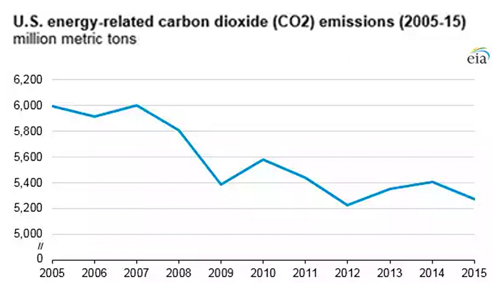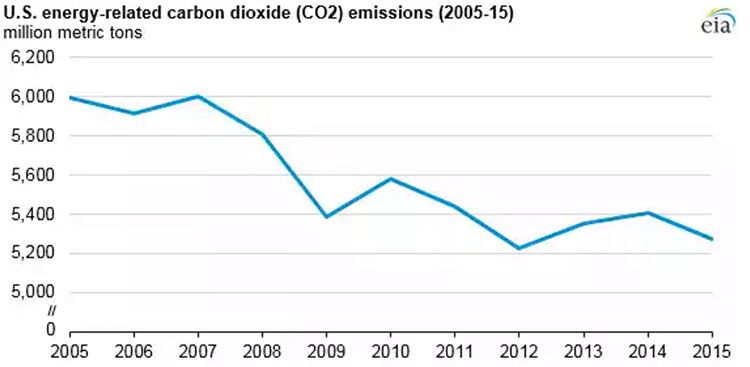

U.S. energy-related carbon dioxide emissions declined in 2015, falling 12 percent below 2005 levels due to coal-fired power plant retirements and increased use of renewables and natural gas.
The U.S. economy has expanded 15 percent since 2005 and last year was the first time since 2012 that power sector emissions fell while the economy continued to grow, according to the U.S. Energy Information Administration. The U.S. has pledged to reduce power sector emissions 32 percent from 2005 levels by 2030.
For a deeper dive: The Hill, Guardian, E&E News, Carbon Pulse, Wyoming Public Radio
For more climate change and clean energy news, you can follow Climate Nexus on Twitter and Facebook, and sign up for daily Hot News.
YOU MIGHT ALSO LIKE
Army Corps Denies Permits for Biggest Proposed Coal Export Terminal in North America
Record-Breaking Wildfire Rages On in Canada’s Oil Sands Region
People Power Over Corporate Power = Canceled Pipeline Projects

 233k
233k  41k
41k  Subscribe
Subscribe 
